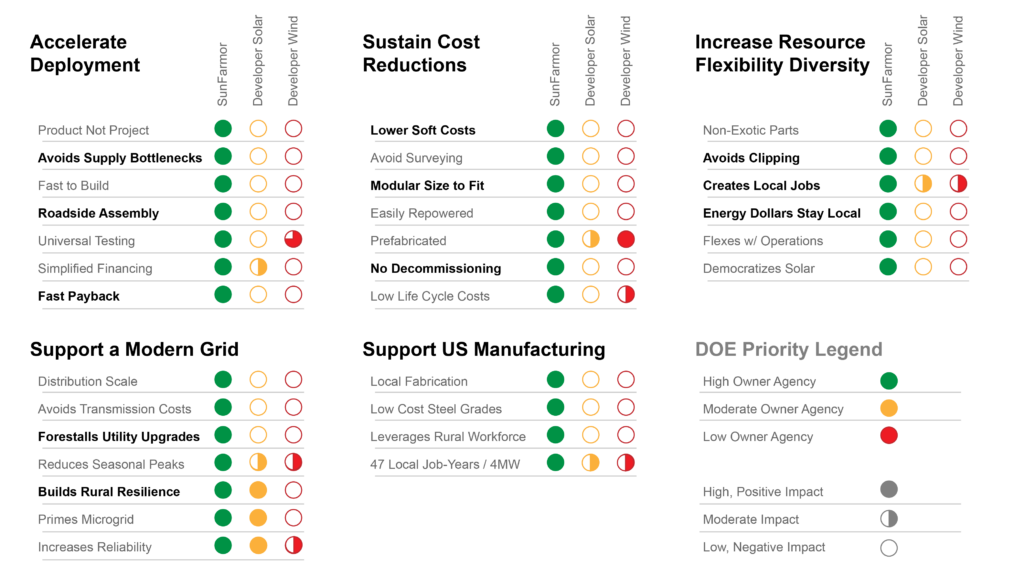
As shown above, SunFarmor solar farms align with the DOE’s five priorities for the energy transition. First, SunFarmor generators accelerate deployment with a product – not a project – enabling rapid deployment while avoiding labor and supply bottlenecks. With the Inflation Reduction Act incentives, USDA program incentives like REAP (Renewable Energy for America Program) loans and grants, and market rewards for decarbonization, owners will break even in the first year in most cases.
Second, although SunFarmor generators won’t substantially reduce first costs, they dramatically reduce the Total Cost of Ownership, especially for multigenerational family businesses. Future generations can repower the chassis with the same efficiency as the original deployment. Unlike conventional solar farms, SunFarmor generators don’t need to be fenced or decommissioned. Since the system obviates surveying and geotechnical investigation, soft costs will be a fraction of a typical distributed-scale solar farm.
Third, with its distributed manufacturing and roadside assembly model, SunFarmor technology increases resource flexibility and diversity. Free of exotic parts, local labor will prefabricate the subassemblies, keeping dollars in rural communities. With the agency inherent in owning two means of production, a farmer can use every drop of unclipped solar energy behind the meter for their benefit.
Fourth, multiple SunFarmor solar farms in a service territory will support a modernized grid by increasing reliability and local resilience. The rural electric co-op will benefit from behind-the-meter generation collocating with seasonal peak loads like grain drying, which can forestall potential infrastructure upgrades. Eventually, Rural Electric Member Cooperatives (REMCs) can act as Distributed System Operators able to respond to peak loads by dispatching energy storage farmers use to smooth intermittencies during the day.
Lastly, with numerous projects launching across the Corn Belt in parallel, EPCs can leverage and grow small businesses with skills like welding which are ubiquitous in rural America. For every four 1MW solar farms, Trackersled will create 43 job years in the local community. As shown in Illustration 4 and modeled in IMPLAN, four 1MW SunFarmor module farms in Champaign County, Illinois with 800kWh of storage and $1M H2/NH3 plants, will result in $3.4M of indirect and induced economic gains. Unlike typical solar developments that export power and dollars, SunFarmor solar farms distribute benefits locally.
